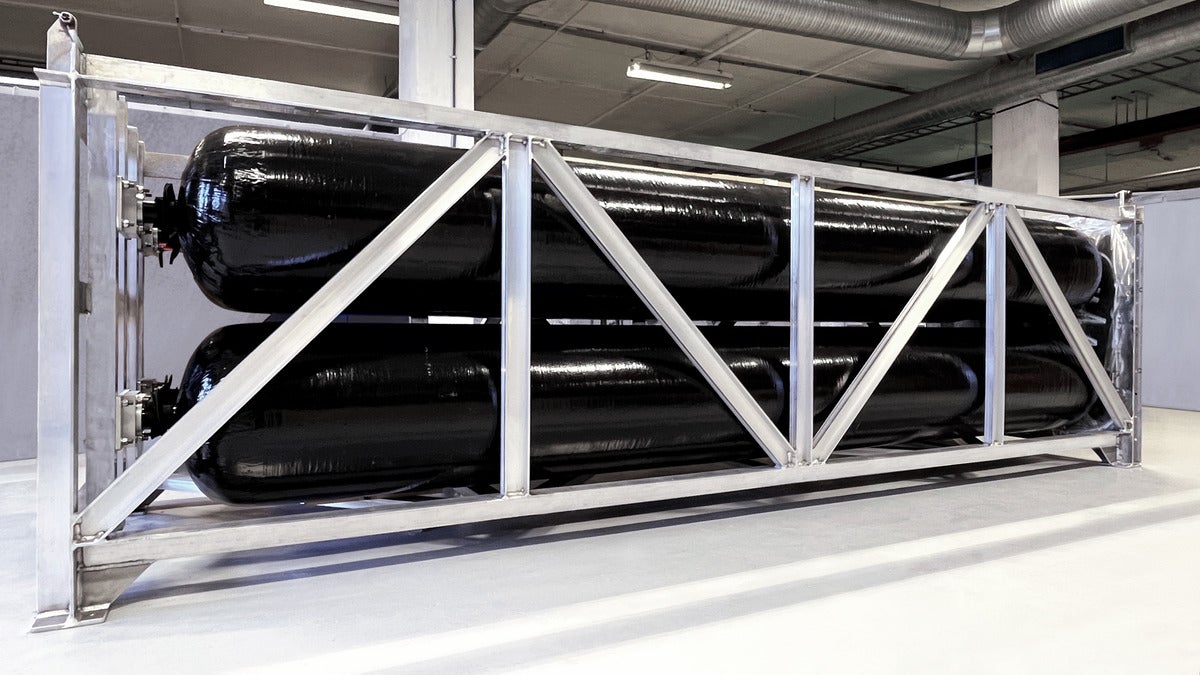As the shipping industry moves toward decarbonisation, hydrogen is gaining traction as a key solution for cleaner, more sustainable maritime transport. With shipping responsible for about 3% of global greenhouse gas emissions, the chance to significantly cut this figure is more promising than ever, thanks to recent advances in hydrogen technology.
The International Maritime Organization (IMO) is targeting net-zero emissions by 2050, and hydrogen is proving to be a viable option, especially for short-sea shipping, ferries, and service vessels that run on predictable routes.

In the past few years, hydrogen’s potential has shifted from theory to reality. While still in the early stages for applications in the shipping industry, its feasibility as a scalable and reliable fuel source is steadily growing, offering a practical solution for powering vessels with a reduced environmental footprint.
When hydrogen is the right fit for maritime
Hydrogen is increasingly recognised as a complementary solution to batteries for vessels that demand more energy than batteries alone can provide, but don’t require the range needed for deep-sea shipping. Coastal and inland vessels, including ferries, workboats, and offshore support vessels, are ideal candidates for hydrogen propulsion systems. These ships operate on consistent point-to-point routes, where hydrogen refuelling infrastructure can be concentrated, making operations more feasible.
Hydrogen can be used in various forms, most commonly as compressed gas or liquid, offering flexibility to suit different ship types and operational requirements. While liquified hydrogen has a higher volumetric energy density than compressed hydrogen, it must be cooled to -253°C to remain in liquid form.
When used in fuel cells, hydrogen produces no direct greenhouse gas (GHG) emissions during operation. If generated using electricity from renewable sources, life cycle GHG emissions are minimal, limited mainly to transportation and distribution – and even then, emissions only occur if fossil fuel-powered trucks are used for transport.
Despite its relatively recent adoption in the maritime sector, pioneering hydrogen projects are demonstrating its viability and advantages.
It also provides several additional benefits, such as reduced noise pollution – since hydrogen fuel cells have no moving parts and operate silently, and reduced air pollution, enhancing sustainability while minimising disruptions to marine ecosystems.
Despite its relatively recent adoption in the maritime sector, pioneering hydrogen projects are demonstrating its viability and advantages. One example is the 70-foot, 75-passenger Sea Change ferry in San Francisco, a hydrogen-powered catamaran that came into service in July this year. Hexagon Purus supplied hydrogen storage systems for this landmark project, showcasing the ability of hydrogen to provide clean, efficient energy for passenger ferries.
Norway is also leading the charge with several hydrogen projects, including ferries and workboats. Norled’s hydrogen-powered ferry, MF Hydra, launched in 2021, is the world’s first ship sailing on liquid hydrogen.
Norwegian provider of vessels for the aquaculture industry, Moen Marin, is another pioneer that has adopted hydrogen storage systems for its workboats servicing fish farms. The success of these projects is encouraging further investments and interest from ship owners worldwide.
Policy support and economic shifts
While the cost of green hydrogen is still higher than traditional fossil fuels, government policies are aiming to accelerate cost reductions.
In the US, the Inflation Reduction Act is offering incentives that aim to bring the cost of hydrogen down to $1/kgH2 by 2030. Similarly, the EU Hydrogen Bank is promoting the production and distribution of green hydrogen across Europe. In April this year, it awarded nearly €720m to seven renewable projects in Europe, which together plan to produce 1.58 million tonnes of renewable hydrogen over the next 10 years.
A second auction will be announced in December this year with a budget of €1.2bn. These initiatives are essential for closing the gap between hydrogen and traditional fuels, making hydrogen a more cost-competitive option for ship operators.
According to DNV’s Energy Transition Outlook 2024, the cost of producing hydrogen will decline towards around $2/kgH2 on average by 2050, with some projects coming in at under $1/kgH2. Gradual cost reductions, coupled with government subsidies, will help to position hydrogen as an economically viable solution for the maritime industry.
One of the key accelerators for hydrogen in maritime is the steady progress being made in infrastructure development.
One of the key accelerators for hydrogen in maritime is the steady progress being made in infrastructure development. European ports are leading the charge. The Port of Rotterdam, Europe’s largest port, is establishing a hydrogen import terminal to cater to the increasing demand for green hydrogen. By 2030, the port plans to distribute 4.6 million tonnes of hydrogen per year, accounting for approximately 13% of the EU’s total projected hydrogen consumption.
Similarly, Antwerp-Bruges has positioned itself as a critical hub for the import, production, and distribution of hydrogen. In Norway, Ocean Hyway Cluster’s HyInfra project aims to develop hydrogen fueling infrastructure specifically for maritime use. Currently, five hydrogen refuelling stations for maritime vessels are operational or under construction in Norway alone.
Technological advancements driving hydrogen forward
As hydrogen adoption accelerates, technological innovations are keeping pace. According to the Zero Emissions Ship Technology Association (ZESTAs), fuel cells have been used in seagoing vessels, including passenger vessels and submarines, for over 30 years. Multi-megawatt (MW) Fuel cells are currently being used to generate power in stationary applications with >1MW systems being used in port marine environments for over a decade.
Hydrogen fuel cells for maritime applications are commercially available and based on proven, well-established technology, having been used successfully in automotive, heavy-duty transport, and industrial stationary sectors for years.
Hybrid systems are also emerging as an interim solution, allowing vessels to combine hydrogen fuel with other energy sources, such as batteries or traditional fuels. These hybrid systems enable a smoother transition to hydrogen and help operators manage the shift without disrupting operations. As ship designs continue to evolve, the integration of hydrogen fuel cells and storage tanks is becoming more seamless, opening the door to new vessel types that can maximise hydrogen’s potential.
Hydrogen offers a clear path to decarbonising the maritime industry.
One such example is Greenpeace’s new 75-metre vessel featuring advanced green technologies, including hydrogen and e-methanol power systems. Hexagon Purus Maritime will deliver a compressed hydrogen fuel system for the boat which is being built by Freire Shipyard and designed by Dykstra. The boat will harness wind and solar power through over 2000 square metres of sails, battery packs, and solar panels. It will also feature advanced power systems enabling the use of green hydrogen and e-methanol to meet its remaining energy needs.
Looking ahead, hydrogen offers a clear path to decarbonising the maritime industry. As more vessels adopt hydrogen fuel cells and hydrogen infrastructure continues to expand, hydrogen-powered vessels could become the norm rather than the exception, contributing to a global shipping ecosystem that is cleaner, more resilient, and aligned with the world’s climate goals.




